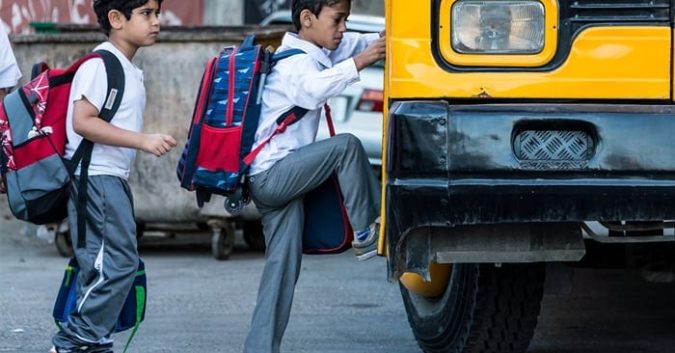Imagine preparing for your child’s first day of school. You head to the school grounds a few weeks before to get all the necessary paperwork in order: registration, emergency contacts, proof of residence. But minutes after you arrive to register, you’re ushered out. The school is locked down. Nobody can say whether your child will return for her first day after all.
Sound familiar?
Like Mira Costa High School parents did last month, you have a good chance of experiencing a school lockdown, given that one-third of American schools still contain carcinogenic asbestos.
The mineral, once touted for its “miracle” abilities to reinforce, insulate, and fireproof buildings, is now known to poison them. It’s the substance responsible for 40,000 more deaths and 3,200 new mesothelioma cases every year, even at low levels of exposure.
Why, after decades of researching asbestos dangers and developing alternative materials, is this carcinogen still contaminating our schools?
Asbestos Violations in Schools
In case you missed the story, Mira Costa canceled registration last month when contractors renovating a storage room in the library were accused of disturbing asbestos-containing floor tiles.
The storage room, library, and 3 adjacent rooms were closed after a pollution control agency cited 27 violations. The school had not performed an asbestos survey as required by law.
Per the Asbestos Hazard Emergency Response Act (AHERA), an EPA-issued regulation designed to protect school children and employees from asbestos, schools are required to perform regular inspections as well as take preventative measures. In a letter to parents, Manhattan Beach Superintendent Michael Matthews said the school took such a “preventative measure … to protect the tile from damage to avoid potential asbestos exposure” by hiring the contractors to cover the tiles with carpet.
But the contractors disturbed the tile in the process, potentially sending deadly asbestos fibers into the air. Even if this measure was enough to protect the school, the question remains: Why was asbestos present in the first place?
A Decades-Long Risk
In 1984, the EPA told Congress that “most” of the nation’s approximately 107,000 elementary and high schools contained asbestos. Thirty-four years later, two-thirds of local education agencies have schools confirmed to be harboring asbestos.
Why has nothing improved in all those years? For 1 clear but misunderstood reason: Asbestos still hasn’t been banned.
Many Americans mistakenly believe asbestos was outlawed decades ago, when the EPA tried to enforce an existing ban on the mineral. But asbestos industry lobbyists succeeded in overturning the ban in 1991. This pattern of lobbyist intervention only continued, through to 2016 when President Trump appointed lobbyists to lead the EPA itself.
As a result, the EPA’s stance on asbestos regulation switched from passive to plain destructive. Trump’s EPA started by dismantling the recently updated Toxic Substances Control Act (TSCA) to deprioritize asbestos risk assessment. Trump himself has repeatedly endorsed the mineral. The EPA’s goal now seems not to protect the people, but to protect a multibillion-dollar industry. And this year, under new guidelines, the agency stopped requiring asbestos evaluations in homes, workplaces, and schools.
The Case for a Safer Future
Whether it was too little, too late or better late than never for Mira Costa to take action against asbestos, we don’t know whether other schools will follow suit. Trump’s deregulatory path is paved with uncertainties.
How many more schools will be cited for violations? How many more will be shut down, potentially displacing students for years?
Countless other industries have regulated asbestos, and 60 other nations have banned it outright. The EPA has ample means to do the same here. But first, we need its ex-industry leaders to stop choosing profit over our children’s health. It’s unthinkable that this even needs to be said.
